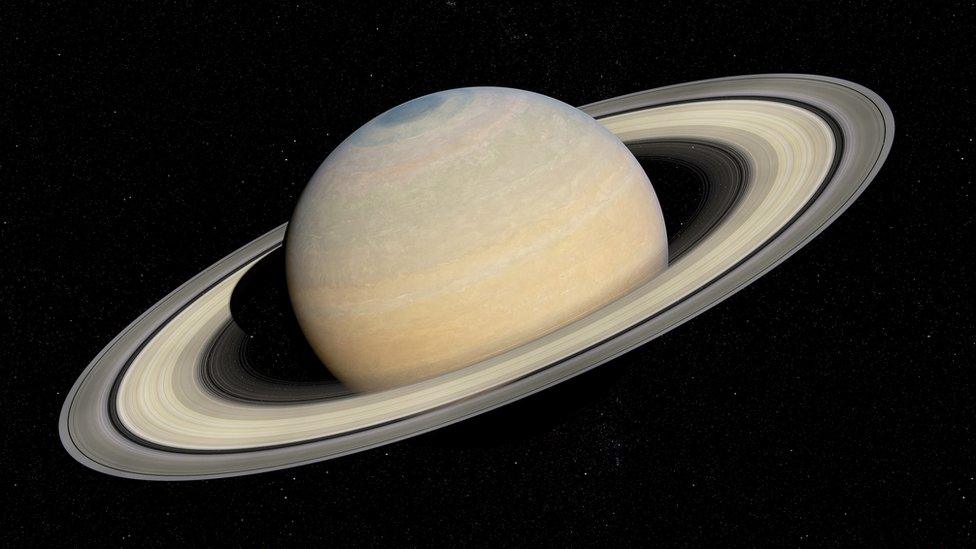Saturn's rings are much younger than first thought
- Published
- comments

What came first - the rings or the planet?
When looking at the other planets in our solar system, one in particular is instantly recognisable.
Saturn stands out due to its unmistakeable rings, which are thought to be made up of fragments of comets, asteroids, or shattered moons that broke up before they reached the planet.
But there was a time when the rings were not there at all.
And now, scientists studying the gas giant say its signature rings are much younger than they had previously thought.
How do you work out how old Saturn's rings are?
Nasa researchers have been studying data from a spacecraft called Cassini which was launched in 1997 and ended its mission 20 years later.
They have been particularly interested in the thin layer of cosmic dust that has been left behind on the ice that makes up Saturn's rings.
The researchers wanted to see how quickly this dust builds up, which would then offer clues on the age of the rings.
They explain it by asking us to imagine being in a 500-year-old house that had never been cleaned - the layer of dust is likely to be much thicker than the surfaces in a 30-year-old house.
Scientists already know Saturn itself is around 4.5 billion years old - the same age as the rest of the universe.
But now with the new dusty evidence, the team of scientists believe the planet's rings are only around 400 hundred million years old.
WATCH: Newsround looks back at Cassini's 20 years in space (2017)
Professor Sascha Kempf, an associate professor in the Laboratory for Atmospheric and Space Physics at the University of Colorado, Boulder, in the US said it is a huge step to knowing more about Saturn's seven rings, but the formation of them is still a huge mystery.
"We know approximately how old the rings are, but it doesn't solve any of our other problems.
"We still don't know how these rings formed in the first place," he said.
Experts believe that these rings might already be vanishing and will be completely gone in another 100 million years as the ice "rains" on the huge gas planet.
- Published8 October 2019
- Published15 October 2021
